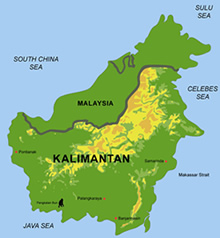lidar technologies

Lidar technologies
We measure distances by illuminating a target with a laser and analyze the reflected light.
- Biomass Situation of Mawas Region in Central ...
- Spatial and temporal variation of above ground ...
- Multi-Temporal Airborne LiDAR-Survey and Field ...
- Relating ground field measurements in Indonesian ...
- Assessing Carbon Changes in Peat Swamp Forest ...
- Multi-Temporal Airborne LiDAR-Survey in 2007 and ...
- Characterizing Peat Swamp Forest Environments ...
- Multi-temporal Helicopter LIDAR- and RGB-Survey ...
- Application of LiDAR data for analyzing fires, ...
- LiDAR Technology for peatland using DSM- and ...
- Small-footprint airborne LiDAR technology for ...
- 2006 Fire depth and tree height analysis in Block ...
- Relating tree height variations to peat dome ...
- LiDAR- / Airborne Laser Scanning mapping of ...
- Rungan Sari PCB, Draft Masterplan with LiDAR-DTM ...
- LiDAR Survey of Small Scale Gold Mining near ...
- Airborne Laser Scanning measurements in Central ...
- Peatland Topography of Ex-MRP measured with ...
- Rungan Sari Airborne Laser Scanning 3D-Model and ...
- Peat Dome Measurements in Tropical Peatlands of ...
- Erfolgreiches Pilotprojekt im tropischen ...
- Airborne Laser Scanning monitoring of Ex-MRP area ...
- Successful Helicopter Flight Trials with Airborne ...
- Successful Helicopter Flight Trials with Airborne ...
gallery

image gallery
Find a large collection of images from many years of exploration by kalteng-consultants.
History Borneo - Kalimantan · Excursions to peatland 1996 · Mega Rice Project 1999 · 2004 · 2005 · 2006 · 2007 · 2008 · 2009 · 2010 · 2011 · 2012 · 2013 · 2014 · 2015 · 2016-March · 2016-August ·
lidar-technology
Small-footprint airborne LiDAR technology for REDD+ and MRV application; 11-2010

Peat dome LiDAR analysis (DTM) with 1m contour-lines, profile (topography) and tree height versus peat slope of the Sabangau natural laboratory transect, Central Kalimantan, Indonesia
5th Technical Roundtable on MRV
“RECENT FINDINGS AND INITIATIVES ON MRV FOR REDD+ AND LULUCF”
5th November 2010, Jakarta, Indonesia
5th November 2010, Jakarta, Indonesia
BACKGROUND
As part of the achievement of GHG emission targets, the government of Indonesia (GOI) pays considerable efforts on setting up transparent, internationally-accepted measuring, reporting and verification (MRV) system. The most recent establishment of REDD+ Tasks Force under Presidential decree indicates the seriousness of GOI to make a significant investment to achieve such goal. In addition, GOI is also developing institutions and mechanisms to establish a robust MRV system by establishing interrelated institutions: finance, REDD+ and MRV.
A number challenges that would influence the success of the implementation of MRV including policy design, data acquisition and management, technology and technical capacities as well as institutional mechanism among key agencies operated at different level of governance. As such, there is a need to framing the dialogue on various key elements of MRV to be build.
A number challenges that would influence the success of the implementation of MRV including policy design, data acquisition and management, technology and technical capacities as well as institutional mechanism among key agencies operated at different level of governance. As such, there is a need to framing the dialogue on various key elements of MRV to be build.
LULUCF and peat are by far have been predicted to be one of the largest contributors to Indonesian’s current and future emission. Based on existing data, peat itself is estimated to grow from 770 MtCO2e to 990 MtCO2e between 2005 and 2030 (DNPI, 2010). It roughly represents about 5% shares of global emission. However, this estimation might not be a precise figure as the scientific research is still developing, especially on peat decomposition and fires. Therefore, there is a need to improve the exiting peatland measurement by using robust techniques and methodology.
In addition, there is also a need to establish a forum to share the expertise among scientists in developing a more robust estimate on emission from peatland. National Council on Climate Change – Indonesia (DNPI) and Hokkaido University will be initiating a dialogue to establish an international partnership on Indonesia Peatland Mapping as a response to the scientific challenges in creating more precise peatland information.
by
Dr. Hans-Dieter Viktor Boehm, Mr. Veraldo Liesenberg and Mr. Juergen Frank
Kalteng Consultants and Freiberg University of Mining and Technology, Germany
Kalteng Consultants and Freiberg University of Mining and Technology, Germany

